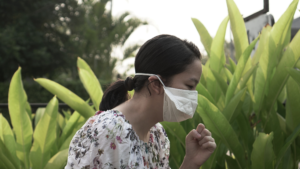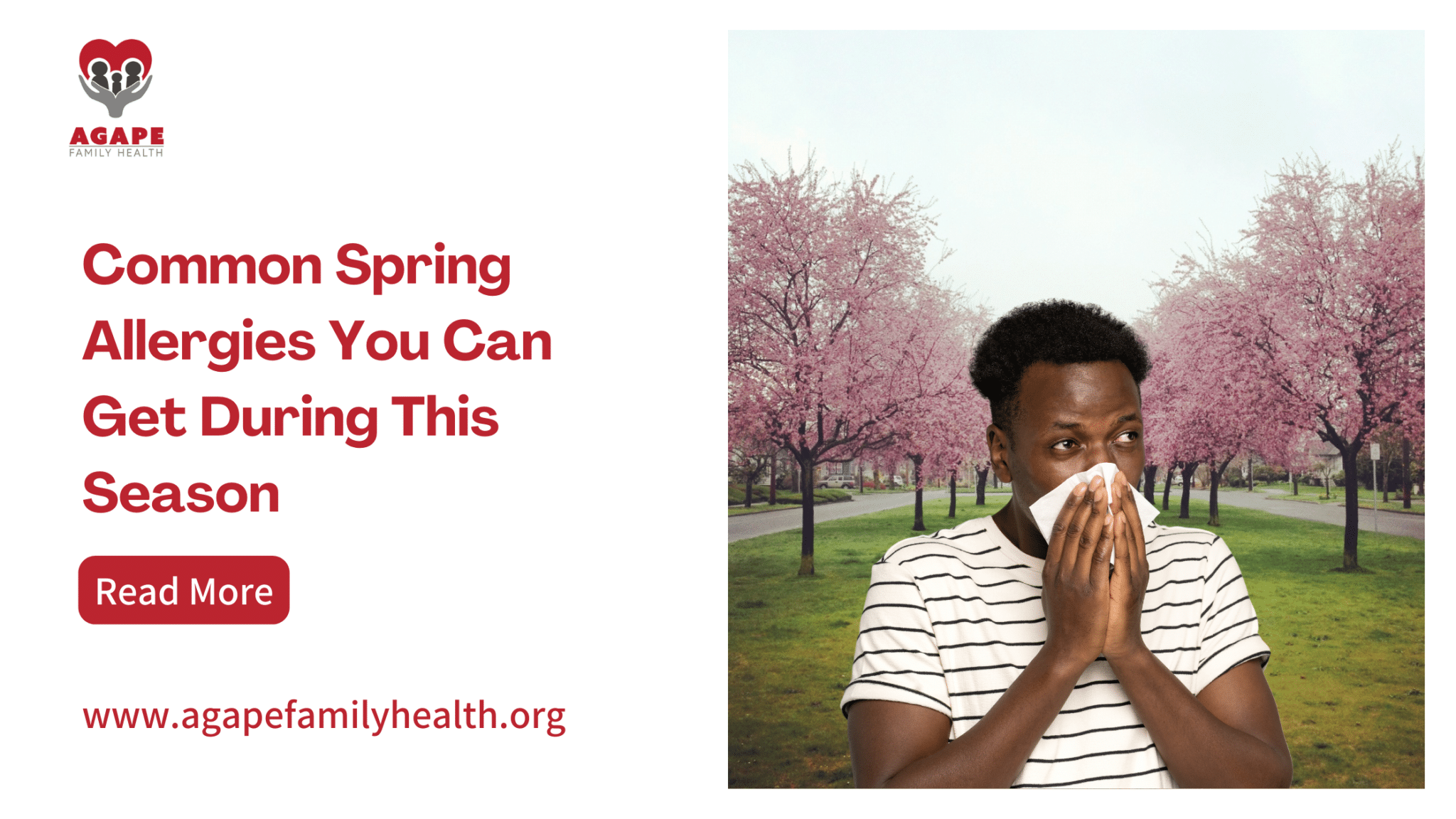Spring brings with it a refreshing change from the cold and bleak winter months, with flowers blooming and trees regaining their lush greenery. However, for millions of people worldwide, this season also heralds the onset of allergies. Allergies in spring are primarily triggered by the increased pollen in the air, leading to a range of uncomfortable symptoms. In this article, we delve into the common spring allergies to provide a comprehensive understanding of what you might be up against this season.
What Are the Reasons for Common Spring Allergies?
Pollen
Pollen, the fine, powdery substance released by trees, grasses, and weeds, serves a crucial role in plant reproduction but is also the leading cause of spring allergies. As these tiny grains disperse through the air to fertilize other plants, they can inadvertently enter the human respiratory system, triggering allergic reactions in sensitive individuals.
Types and Timings
The types of pollen that predominantly cause allergies vary throughout the spring season. Tree pollen is usually the first to appear, often as early as late winter in some regions, followed by grass pollen in late spring and early summer, and weed pollen in late summer to fall. Each type can travel long distances in the air, making it difficult to avoid.
High-Risk Conditions
Pollen levels in the air can fluctuate daily and are heavily influenced by weather conditions. The CDC notes that pollen counts tend to soar during the early morning, on windy days when pollen is swept up and carried through the air, and after heavy rainfall, which can burst pollen grains, releasing a higher concentration of allergens. Dry, warm days also tend to see higher pollen counts than cold, wet days.
Managing Exposure
Reducing exposure to pollen involves staying indoors on high pollen count days, which can be tracked through local weather forecasts or specific allergy apps. Closing windows and using air conditioning with clean filters can help keep indoor air clean. Showering after being outdoors can remove pollen from skin and hair, and wearing sunglasses and hats can provide a physical barrier against pollen.
Mold: The Stealthy Spring Allergen
Mold, a type of fungus that thrives in warm, moist environments, becomes a more pronounced problem during the spring. Mold reproduces through tiny spores that are invisible to the naked eye and can be released into the air, where they can be inhaled, triggering allergic reactions.
Outdoor and Indoor Hazards
Outdoors, mold can be found in soil, compost piles, and fallen leaves, as well as on vegetation and rotting wood. Indoors, mold spores can flourish in damp areas like bathrooms, basements, and kitchens, especially in the presence of leaks or condensation.
Triggers and Symptoms
When mold spores are inhaled by someone who is allergic, they can trigger symptoms similar to those caused by pollen, including sneezing, runny or stuffy nose, coughing, and itchy eyes and throat. For people with asthma, mold can also trigger asthma attacks, making it a dual threat for individuals with respiratory sensitivities.
Prevention and Control
Controlling indoor humidity levels below 50% can help inhibit mold growth, as can fixing leaks and improving ventilation in damp areas. Outdoors, avoiding areas that are likely to be mold hotspots, such as wooded areas or piles of decaying leaves, can reduce exposure. For those particularly sensitive to mold, wearing a mask while performing activities that disturb mold, such as raking leaves or gardening, can provide protection.
Common Spring Allergies
Insect Stings
As the temperatures rise in spring, so does the activity of various insects. Bees, wasps, and fire ants are particularly more active during this season, and their stings can cause allergic reactions in susceptible individuals. These reactions range from mild to potentially life-threatening.

Mild to Moderate Reactions
For most people, an insect sting results in symptoms localized to the site of the sting. This can include pain, redness, swelling, and itching. These symptoms typically resolve on their own within a few days and can be managed with over-the-counter pain relievers and antihistamines.
Severe Allergic Reactions (Anaphylaxis)
However, approximately 5% of the U.S. population is at risk of experiencing anaphylaxis, a severe and potentially life-threatening allergic reaction. Symptoms of anaphylaxis may include difficulty breathing, hives, swelling of the face, throat, or mouth, a rapid drop in blood pressure, and dizziness or fainting. Anaphylaxis requires immediate and affordable medical care, and individuals known to have severe allergic reactions to insect stings often carry epinephrine auto-injectors (e.g., EpiPen®) to treat themselves promptly.
Prevention and Management
Preventive measures include wearing long sleeves and pants when outdoors, using insect repellent, and being cautious around insect nests or hives. For those with known severe allergies, consulting an allergist for venom immunotherapy, which can significantly reduce the risk of severe reactions to future stings, is advisable.
Air Pollution
Spring not only brings natural beauty but also a rise in air pollution levels, particularly in urban and industrial areas. Pollutants such as ozone, particulate matter, and nitrogen dioxide can worsen allergy symptoms and trigger asthma attacks.

Impact on Allergies and Asthma
Air pollution can irritate the airways, making individuals more susceptible to allergens and exacerbating the symptoms of allergies and asthma. Ozone, a major component of smog, can be especially harmful, causing coughing, throat irritation, and chest pain. Particulate matter, which includes dust, dirt, soot, and smoke, can penetrate deep into the lungs and even enter the bloodstream, leading to increased risks of cardiovascular and respiratory diseases.
Enhancing Allergic Responses
Studies have indicated that air pollution can enhance the body’s allergic response, making individuals more sensitive to allergens. Pollutants can interact with pollen and other airborne allergens, increasing their potency or altering the immune system’s response to these allergens.
Monitoring and Mitigation
The EPA’s Air Quality Index (AQI) provides daily reports on air pollution levels, offering valuable information for individuals with allergies or asthma to plan their outdoor activities. Staying indoors on days with high pollution levels, using air purifiers with HEPA filters indoors, and reducing outdoor exercise during peak pollution times can help mitigate the effects of air pollution on allergies and asthma.
Animal Dander
Another one of common spring allergies you might encounter is animal dander. These are tiny flakes of skin shed by cats, dogs, and other furry or feathered pets, is a common allergen that can cause discomfort for sensitive individuals, particularly during spring. As pets begin to shed their thick winter coats, the amount of dander in the home environment can significantly increase.
Exposure and Symptoms
Exposure to animal dander can trigger allergic reactions that are similar to those caused by more recognized allergens like pollen and mold. Symptoms may include sneezing, runny or stuffy nose, itchy eyes, and asthma attacks in asthmatic individuals. Because dander particles are microscopic and can easily become airborne, they can be inhaled without notice, making them a pervasive allergen source.
Management Strategies

The AAFA recommends several strategies to minimize the impact of animal dander:
- Regular Pet Grooming: Bathing and grooming pets regularly can significantly reduce the amount of dander they shed. It’s most effective to groom pets outside to prevent dander from settling indoors.
- Clean Living Environments: Frequent vacuuming with HEPA filters and dusting can help remove dander from surfaces and air. Air purifiers can also reduce airborne dander.
- Limiting Pet Access: Keeping pets out of bedrooms and other areas where people spend a lot of time can help reduce exposure to dander.
- Dust Mites: Invisible Allergens in Your Home
Dust mites, microscopic creatures thriving in household dust, feed on dead skin cells and flourish in warm, humid environments. Unlike seasonal allergens, dust mites are a year-round concern but can become more problematic during spring cleaning activities.
Disturbance and Symptoms
Spring cleaning can disturb dust mite habitats, releasing them into the air and increasing exposure. Symptoms of a dust mite allergy resemble those of pollen and mold allergies and can also exacerbate asthma symptoms.
Reducing Exposure
To minimize exposure to dust mites, the AAFA suggests:
- Use of Allergen-Proof Bed Covers: Encasing mattresses and pillows in allergen-proof covers can significantly reduce exposure to dust mites.
- Regular Washing of Bedding: Washing sheets, pillowcases, and blankets in hot water (at least 130°F) weekly can kill dust mites and remove allergens.
- Humidity Control: Maintaining indoor humidity levels below 50% can create an environment that’s less hospitable to dust mites. Dehumidifiers can help in particularly humid areas.
Chemical Sensitivities
Spring cleaning, while beneficial for reducing exposure to some allergens, can inadvertently introduce another: chemicals from cleaning products. These chemicals can irritate the respiratory system and trigger allergies or asthma.
Chemical Triggers and Symptoms
Symptoms can include respiratory irritation, headaches, dizziness, and exacerbation of asthma or allergy symptoms. Those with existing respiratory conditions may be more susceptible to the effects of these chemicals.
Safer Cleaning Practices

To minimize the risk of chemical sensitivities, the American Lung Association recommends:
- Natural Cleaning Products: Using vinegar, baking soda, and other natural products for cleaning can reduce exposure to harsh chemicals.
- Ventilation: Ensuring adequate ventilation while cleaning can help disperse any airborne chemicals and reduce inhalation risks.
- Selecting Safer Products: Choosing cleaning products with fewer chemical irritants and paying attention to labels can help identify safer options.
More You Need to Know
With a prevalence affecting between 10% to 30% of the worldwide population, allergic rhinitis is a widespread health concern. In the United States, the CDC underscores the magnitude of this issue, reporting that over 19.2 million adults and 5.2 million children have been diagnosed with hay fever in the past year alone.
Economic Burden
The economic implications of allergies, including seasonal allergies, are profound. The American Academy of Allergy, Asthma & Immunology (AAAAI) estimates that allergies contribute to more than $18 billion in healthcare costs annually in the United States. This figure encompasses direct costs, such as medical treatments, doctor visits, and medications, as well as indirect costs, including lost productivity due to missed days of work and school.
Healthcare Costs
The direct healthcare costs associated with allergies include diagnostic testing, prescription medications, over-the-counter remedies, and in some cases, emergency care for severe reactions. These expenses add a considerable burden to the healthcare system and to individuals managing their allergies.
Productivity Loss
Allergies also have a significant impact on productivity. The AAAAI’s estimate of over 6 million missed work and school days each year highlights the disruption caused by allergies to daily life and economic productivity. This loss not only affects individuals and families but also employers and educational institutions.



